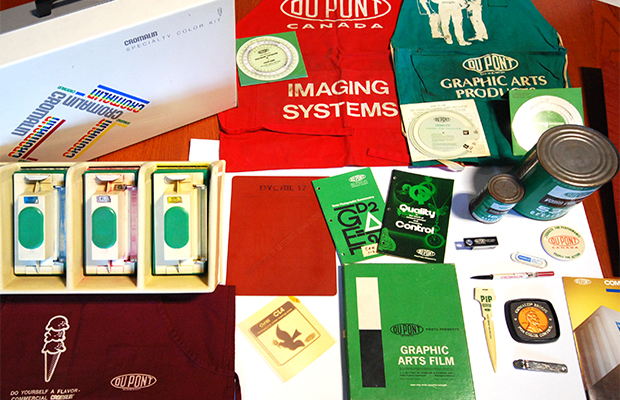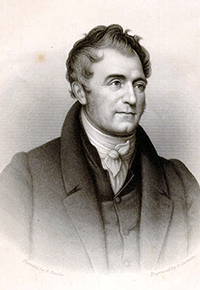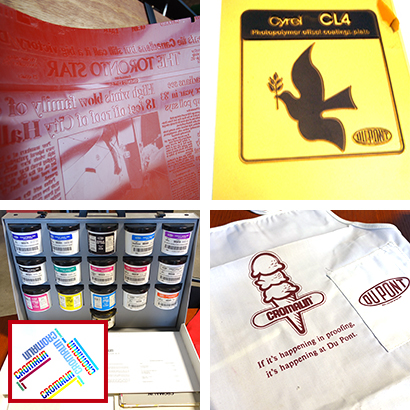
|
|
| Home › Articles › Here |
|

|
||||||||||||||||
| By: Nick Howard | Date: April 2018 | Contact the Author | |||||||||||||||||
|
Pierre Samuel du Pont, a Frenchman,
immigrated with his
family to America in 1799.
Before setting sail, he was
warned that the French
were rather unpopular in the now independent
colonies. But tiring of French
politics, America drew him like a magnet.
Samuel was a printer and publisher in
France and he would develop a close relationship
to U.S. President Thomas Jefferson.
He would return to France in
1802 and play a pivotal role in America’s
purchase of the French territories. This large swath of land along the Mississippi River Valley, south from the Gulf of Mexico northward, would make up 13 new American states. Samuel laid the groundwork for his family to settle in the state of Delaware. The original idea of business was the colonization of lands in Delaware. But this would prove difficult as did many other ideas he dreamed up. But he had sons – and in 1802 fortune would change by serendipity. Let's Go And Shoot Something Eleuthére Irénée was a son of Pierre Samuel. Young, energetic and resourceful Irénée went hunting one day with a French-born artillery officer. By mid-afternoon both men had run out of gunpowder so they stopped into a country store to purchase some. To both men’s disappointment they found the local gunpowder of poor quality and a very high price. Irénée had studied black powder in France under the chemist Antoine Lavoisier, and also held a position in the French central powder agency.
The first 30 years brought no fortune to the du Ponts as Irénée had difficult partners. Even by the time America went to war with England in 1812 and his factory was supplying record amounts of black powder, the account books would show no profits. Irénée wrote to a friend: “I owe more than sixty thousand dollars, chiefly in notes at the banks, so that my debts amount to far more than my profits from the powder. The signatures that must be renewed every sixty days put me in exactly the situation of a prisoner on parole who must show himself to the police every month.” After the war of 1812, things would get even direr when a huge explosion destroyed the Brandywine factory on March 19, 1819. Thirty-six men were killed and the force of the explosion even rattled windows in the capital of Wilmington. 85,000 pounds of gunpowder sent shockwaves as far off as Pennsylvania. Irénée’s wife would be injured and never recover. But, rebuild he did and by the time of his death, in 1834, the Delaware factory was producing over a million pounds of black powder annually. Du Pont never looked back. By the time America entered the Great War (1917), du Pont was able to produce one million pounds in 24 hours. Why Not Canada? During the closing days of America’s civil war du Pont scion, Lammot du Pont, was called upon – this time by President Lincoln, to travel to England and negotiate for as much saltpeter as the English would sell. Saltpeter was a main ingredient of black powder. There was also a disruptive technology that emanated from the Swedish inventor Alfred Nobel. Dynamite made with nitroglycerin was a vast improvement on the old black blasting powder. Lammot pushed for the Du Pont Company to get into what would be turn out to be a successor explosive. But, he failed to win his case and instead moved to Canada to finance a Union army surgeon by the name of Thomas Brainerd. In Canada, they purchased the Hamilton Powder Company. As the decades passed, du Pont would eventually have a stake in what would be known as Canadian Industries Limited, or C.I.L. By 1880, du Pont-USA would finally acquiesce and manufacturer dynamite. In fact, by 1920 du Pont was the largest manufacturer of dynamite. Remington Arms, the firearm manufacturer had du Pont investment from 1933 till it was sold off in 1993. Bullets need gunpowder. Meanwhile in the U.S., du Pont was just awakening to exciting industries and would put their indelible stamp on one – PRINT. Turning Toward The Printer In the early 1900s, a Swiss chemist by the name of Jacques Brandenberger, was hard at work trying to develop a protective cover for tablecloths. He experimented with the tree by-product: cellulose. By 1911, Brandenberger had fashioned a machine to produce this new material and decided to call it Cellophane. Du Pont, looking to expand their product lines, quickly purchased the American rights, and in 1924 the first American production rolled off the casting machine in Buffalo, N.Y. Cellophane proved to be a huge success. All sorts of uses were found – many in the printing and packaging industry. These went from bread and candy wrappers to pastry boxes with windows: the list is endless. More importantly for the most printers, cellulose also led to the rise of graphic arts film which brought du Pont another revenue source that was growing. With so many scientists and researchers on staff, soon du Pont labs exploded with hundreds of new discoveries and inventions. Most were directed at solving problems and others such as Nylon, were discovered by accident. The printing industry was a desert of needs looking desperately for new ways to exploit substrates such as cellophane. Du Pont was happy to oblige. By the early 1960’s, a phenomenal new printing plate, Dycril, was invented and overnight this exposable photopolymer plate relegated heavy lead stereos to the graveyard. Along with the stereo, went all the heavy casting equipment and flong used to make them. Newspapers quickly saw the benefits of a super-lite material that would reproduce better and save labor.
But, with so much going on outside the world of Print and with further technological changes that would reduce the materials printers use, Du Pont sold off most of its Graphic Arts portfolio to Agfa in 1996. However, Du Pont held onto the most profitable Cyrel line. For well over 100 years, Du Pont has been a labyrinth of businesses. So big that they were forced to break themselves up in 1912 spinning off part of their black powder business to new entities Hercules Powder and Atlas. What began as a friendly collaboration turned into much more when, in 1914, Du Pont first invested in General Motors. By 1929, Du Pont controlled one third of GM. This caught the eye of the anti-trust commission and, by 1961, Du Pont had sold off all their GM stock. To the rest of the world, du Pont is best known as an innovator and inventor of such products as Freon, Teflon, Neoprene, Orlon, Tyvek and Kevlar. But, to the printing community, they left a lasting legacy of chemistry, film and plates. Du Pont made Print better and cheaper to produce and, in the end, made us also a lot of money. Now with a 2017 merger with Dow Chemical completed, Dow-Du Pont is a 73-billion dollar operation that started with a “bang”. All this started with a walk in the woods. Who knew this one catalyst would ever generate eye watering and steady revenues from products other than gun powder? |
|||||||||||||||||
| Contact the Author | |||||||||||||||||
|
|||||||||||||||








